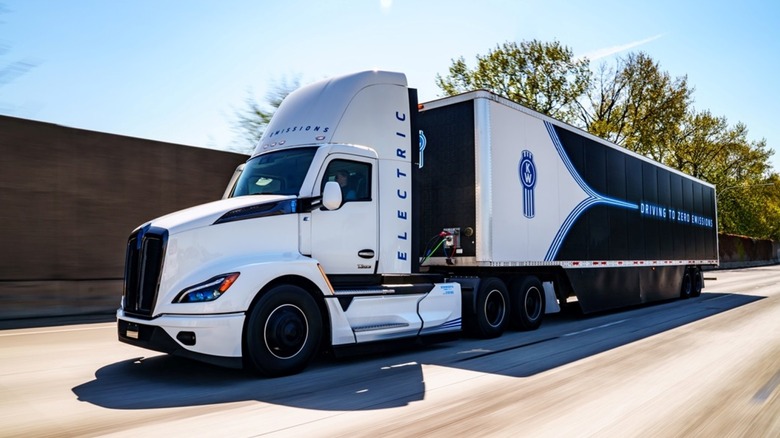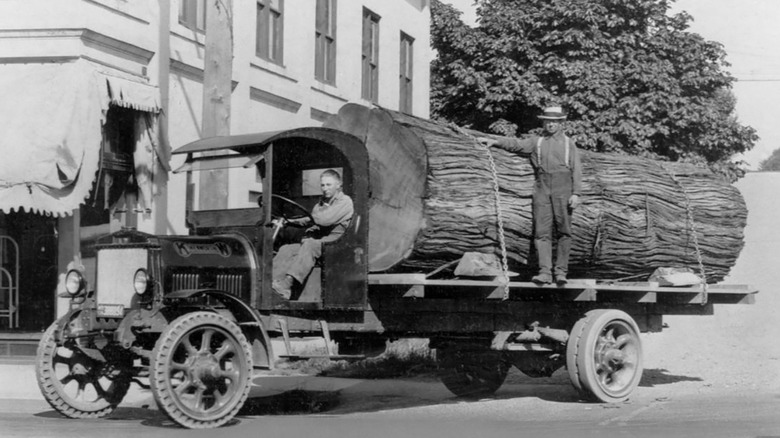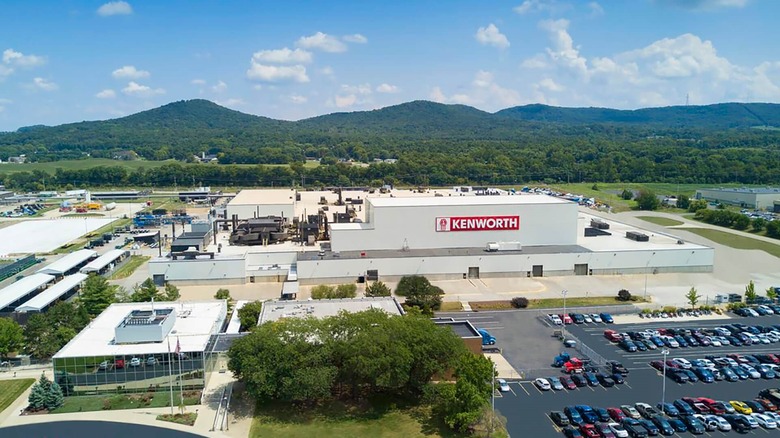How Old Is Kenworth Trucks? Who Is The Founder?
The United States is the land of big vehicles, and unsurprisingly, it has produced some of the most famous semi-truck brands, each offering unique heavy-duty hauling appeal. Kenworth Trucks is favored by Americans for its long and esteemed history of providing stable and durable trucks, evidenced by its 14% market share. Established in 1923, it is one of the oldest heavy-duty truck manufacturers still in operation today. That makes it older than Volvo, sister company Peterbilt, and the perennially beloved Freightliner Trucks (which accounts for a whopping 38% of the U.S. semi-truck market).
Kenworth was founded as Kenworth Motor Truck Company by partners Harry Kent and Edgar K. Worthington, with the name Kenworth being a portmanteau derived from the names of the founding members Kent and Worthington. Kenworth wasn't a new venture but a reincorporated business. The company's origins date to 1914, the year Gerlinger Motors shifted its focus to truck manufacturing and introduced the Gersix. The vehicle had an inline six-cylinder engine and steel framing, making it a great choice for logging. Gerlinger Motors eventually went bankrupt and was acquired by Worthington and Captain Frederick Kent in 1917.
How did Kenworth fare under Worthington and Kent?
Kent and Worthington changed the company's name to Gersix Motor Company after the takeover. By 1919, Captain Frederick Kent retired and passed down his shares to his son, Harry Kent. The new partners reincorporated the business in January 1923, moved its headquarters to Seattle, and started production in March 1923.
With Harry Kent serving as president, history was made in 1933 when Kenworth became the first American truck manufacturer to build standard production diesel trucks as part of efforts to reduce operating costs for truck users during the Great Depression. The engine, a Cummins HA-4 diesel with 100 horsepower, first appeared in vehicles produced for Valley Motor Express. Along with the diesel engine, the Kenworth-built trucks featured the industry's first vertical exhaust stack – a design now used widely by semi-trucks to direct exhaust fumes upwards. In the same year, the company was the first in America to offer an integrated sleeper cab, providing a resting space for drivers.
Although Kenworth has stood as an enduring symbol of American trucking, it contributed to the Second World War by building military vehicles and producing airplane assemblies and subassemblies. Following the war, the company was acquired by Pacific Car and Foundry in 1945, which later rebranded as PACCAR. As a division of Pacific Car and Foundry (now PACCAR), Kenworth has gone on to produce many iconic models, including the now-discontinued Kenworth K100 cabover and Kenworth W900.
Where are Kenworth trucks made?
Currently, Kenworth has factories in four countries. In the United States, Kenworth trucks are built in Chillicothe, Ohio, and Renton, Washington. The Chillicothe plant is a 622,000-square-foot factory employing around 2,500 people. The oldest of the two U.S. factories, the Chillicothe has produced more than 782,000 trucks, including the T680, T880, and W990.
By comparison, the Renton location in Washington is a 300,000-square-foot plant founded in 1993. It manufactures the T680, T880, T800, W900, and C500. The last three are set to be discontinued in 2026 due to concerns about fuel economy. For its medium-duty trucks, Kenworth takes production to the 425,000 square-foot PACCAR assembly plant in Ste-Thérèse, Quebec, Canada. Founded in 1999, the facility builds the T180, T280, T380, and T480.
Then there's the Kenworth manufacturing plant in Mexicali, Baja California, Mexico. At 590,000 square feet, it opened in 1959 and makes Class 5-8 Kenworth vehicles for various markets in North, Central, and South America. The average yearly truck production at the facility has steadily increased since 2020, from around 7,000 units to 12,000 trucks in 2024.
In Australia, Kenworth builds trucks at their plant in Bayswater. The factory opened in 1968, but the first Australian-built Kenworth, a cabover K125CR model, didn't roll off the production line until 1971. Since then, they have produced more than 80,000 Kenworth vehicles, which serve the Australian, New Zealand, and Papua New Guinea markets.


